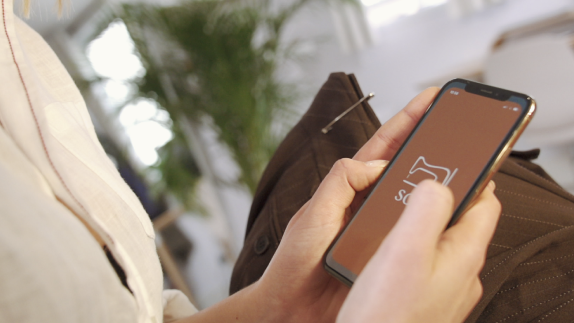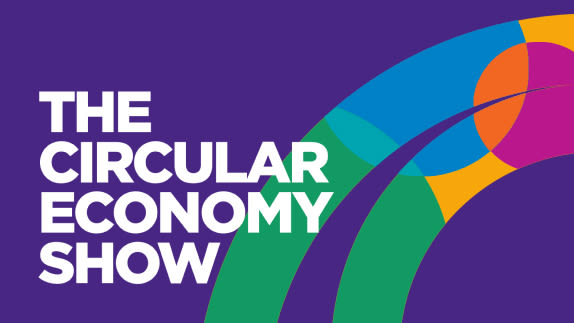What do you do when something you own, say a toaster, breaks? You’ve usually got two options: fix it, or replace it. It often feels like replacing an item is easier than repairing it, and the most cost-effective solution. But in a circular economy, we want goods and materials to stay in circulation at high value for as long as possible. So how does that work in reality? In this new series, Colin Webster from the Ellen MacArthur Foundation explores individual elements of the circular economy.
In this episode, he’s joined by Dr Conny Bakker, Professor of Design Methodology for Sustainability and Circular Economy at TU Delft, and Josephine Philips, the founder and CEO of Sojo, a UK-based third party clothing repair service, to discuss the role of repair.
—
Useful links:
Transcript
Click to expand
Colin 0:05
Welcome to the Circular Economy Show Podcast. In this new series, we're going to explore individual elements of the circular economy, building a more complete view of what the system would actually look like. In this episode, we explore the circular economy and repair. My name is Colin and in the course of this episode, I'll be joined by two repair experts who'll help us get to grips with the subject.
Colin 0:28
And so on to repair. We're all familiar with the problem of broken devices. Imagine you've got a useful object like a toaster that stopped working. Typically, we've got two options, fix it, or replace it. And if we're being honest, replacing something just seems like an easier choice. However, replacing usually means adding to a growing garbage problem with all the systemic downsides that come with it, such as wasted materials and energy, environmental leakage and lost value being just a few.
Colin 0:59
A key aim of the circular economy is to keep goods and materials in circulation at high value for as long as possible. So of course, it favours a repair culture. When goods stay in use for longer, we don't need to replace them, which releases pressure on material and energy use. And not only would repair keep goods out of landfill, but it should also boost skilled jobs and can even have a social benefit.
Colin 1:22
The very act of engaging in repair could be said to provide the means by which societies learn. It's a relational act that should help us get to know our stuff better from which innovation may well spin off.
Colin 1:34
To delve into the world of repair, I caught up with Conny Bakker, Professor of Design Methodology for Sustainability and Circular Economy at TU Delft. And I started by asking her: 'Why might it be desirable to scale up repair activities?'
Conny 1:49
We may need to think about whether we need to scale up self-repair or consumer-led repair, or whether we need to scale up the more, let's say, the more commercial or a third party repair initiatives, including the repair cafes. So that's a difference. And it's often not made very clear, this difference, between consumer-led repair and third party repair. And I would argue that we definitely need to scale up the third party repairs and even commercial and non-commercial. And I'm not 100% certain whether we need to aggressively scale up the consumer-led repair.
Colin 2:29
Why is that?
Conny 2:31
If we have third parties, commercial or non-commercial repairing products, I think as long as these are accessible, so let's say ubiquitous, available and repairs are affordable, then at least we know for sure that repairs will be done at a high level of quality, and that the results will be reliable and safe. And also that there will be no environmental harm done. So that's product that... If batteries are being replaced, for instance, that these batteries will be reprocessed in a responsible manner, instead if you replace the battery at home, the temptation might be to just throw it in the trash can. And those are things that that I would like to prevent happen. So consumer repairs is probably not for everyone, it's for the happy few who have the ability and the information and the skills to do it. And also probably the time and the motivation. But for I think for the vast majority of consumers, this is just too much to ask. And it could actually, to some extent, be unsafe, perhaps. And it may lead to environmental side effects that we don't like. So I would definitely argue for scaling third party repair in all shapes and forms.
Colin 3:44
It sounds like if we do scale up third party repair, we'd have quite an industrious economy. How does that work economically? And especially what might that mean for the original manufacturers? The OEMs?
Conny 3:55
Yeah, OEMs. Of course, they they see costs increase. Firstly, they would have to create products that are more repairable, which would mean design changes, most likely, especially if the products have not been designed with repair in mind, which many haven't, because they have been designed to be assembled quickly and cost effectively, which means not necessarily that they can also be disassembled quickly and cost effectively. So that would be a cost. And then of course they would need to provide spare parts over a longer period than they do now. And probably also more than they have now available, which is another cost for them because they need to keep it on stock, may need to produce extra parts. So those costs are probably they're not looking forward to that. So they need to somehow find a way to get these costs back maybe from charging higher prices or finding other ways to get these costs refunded.
Colin 4:49
Now what about the matter of IP?
Conny 4:51
Some companies don't want their products to be easily accessible on the inside because of intellectual property rights and and all kinds of, you know secrets things they have in there that would, you know, that make their products, as wonderful as it is, they don't want this to be, you know, broadly broadcasted, I guess, and there may also be an issue of liability. What if a consumer electrocutes him or herself, or deeply cuts him or herself, or poisons him or herself, when trying to repair and who is then responsible? So I can imagine that this also is a thing that companies would want to have resolved. So those things are also... and what if, you know, they manage to successfully repair, but then don't manage to put the products back together again, in such a way that the product actually functions well, so that the reliability goes down? And in the end, they blame the company for a bad design?
Colin 5:52
Conny, as you know, there's this new EU legislation that extends the right to repair of electronic products, and companies now have to provide repair manuals or spare parts for these products for a 10 year period. It's quite a change. And as someone who teaches about design for a circular economy, you must be in heaven.
Conny 6:10
Yes, I am really, really happy about this. We are also slightly worried sometimes about the push to have consumers do self-repair. We have also done a little bit of research on how consumers buy products. And to what extent having a very repairable product is actually an added value. So whether it would increase their willingness to buy a certain product, and we found some interesting results. And a bit worrying, because we found that if consumers have a choice between a product that's easy to repair, and a normal, let's say, product, they tend to choose the other one, because they think if a product is easy to repair, it'll probably break easier. So... or break more quickly. So, so that's sort of unexpected side effects of having such repair labels. So it may actually turn people off from buying highly repairable products, because they think they might break sooner.
Colin 7:18
That's a fascinating piece of research.
Conny 7:21
Yes, it is. And there's a lot of of these sort of subtle, unintended side effects, especially when it comes to consumer behaviour that we may need to explore a bit more before we just barge and have repair labels everywhere, and then finding out that they actually don't really do what you want them to do.
Colin 7:40
So as far as Conny is concerned, goods being repairable isn't in itself a guarantee of circular success. And as you heard, she's sceptical of the idea that everyone will, or even should, engage in acts of repair. But repair practices are definitely growing, thanks in part to favourable legislation. Aside from the EU's Right to Repair bill, some national governments have made some interesting moves. For example, Sweden and Austria have both introduced tax breaks and incentives that makes repair a more attractive option than before. Aside from the environmental benefits that repair culture can bring, I really enjoy the increased job and entrepreneurial opportunities that third party repairs can unlock. And I was taken by how much Conny believes that third party repair is a necessary development. So I sought out the opinion of someone who's operating in this space. I caught up with Josephine Philips, the founder and CEO of Sojo, a UK-based third party clothing repair service.
Colin 8:42
Josephine, tell us, what does Sojo do?
Josephine 8:45
Sojo is a fashion tech startup that is working to bring circularity to the fashion industry through clothing alterations and repairs. So we started off by creating the UK's first clothing alterations and repairs app, which actually got classed by Vogue as the 'Deliveroo of repairs', where you could book anything you needed done to your clothes, and then we would take care of the rest, collecting, fulfilling and delivering that order back to you with our network of local seamsters. And we've currently moved into, also, a b2b model where we're trying to facilitate clothing repairs for fashion brands.
Colin 9:18
So Sojo must exist for people like me who don't have the skills to fix my clothes. Is that right?
Josephine 9:24
That's exactly right. I mean, the idea actually came from the fact that I cannot sew a button, despite the fact that many people, given the sector that I'm in, are like, 'Oh, you must be amazing at sewing.' I'm like, 'no, no, that's the exact reason that I created this startup.' It's basically there because we have a generation of people who are coming into the world actually not having the skill set, will never have been taught this skill set. And I think it's really important that you can align them alongside the convenience economy, which has also been grown. And then also obviously, technology is an enabler for so many different things and basically bring the repair and alterations industry into the modern day, to enable young people to access this kind of behaviour.
Colin 10:02
What does success look like for Sojo, then?
Josephine 10:06
I think for Sojo, success really looks at growing as much as we can. And I know that sometimes, actually, that doesn't usually align with the notion of sustainability, and even notions of things like degrowth, and things like that. But I think for us, given that every time we do an alteration or repair, we are elongating the life of an item of clothing, and we all know how destructive, sort of, fashion is, and how much there's sort of a hyper-disposability culture. Every time we do a Sojo order, it is something beneficial to this world and, sort of, the fashion industry as a whole. So ultimately, the faster we grow, the more we grow, the more people we get on board with it, it's a good thing. And I think that's really where circular businesses are so exciting. The more you grow something circular, the better it is for the planet, and its people and sort of the value around clothing in general. So I think for us, what I want to get to is doing hundreds of 1000s of alterations and repairs a day, being a sort of mainstream household name, in terms of our brand, and basically, yeah, being able to disrupt the industry as a whole and bring circularity to the mainstream.
Colin 11:03
We talk about the circular economy being an upstream solution, ie we design goods so that they can fit with a circular economy. But I'm guessing you're altering and mending goods that were not designed for longevity. Do you foresee a future where you have a seat at the table with a designer, so you're part of the upstream mentality?
Josephine 11:22
I love that you've asked that because I think one thing that I'm really excited about from what we're doing when it comes to working with brands is that we really actually want to have an impact on the design process and their manufacturing processes when it comes to clothing. So just as an example for that, there are some brands who do offer repairs, but if they do, it's very ad hoc, it's you go into the store, they maybe repair, it they maybe don't, they maybe give you a new item. Nobody has ever sort of centralised that knowledge when it comes to data. And I think what's really important is us being able to say to a brand, this is how many times this strap snagged on this top. This is how many people requested it to be repaired, that obviously needs to be manufactured for more durability. And they will be incentivised to manufacture for durability more if they are actually paying for those repairs. So we would really want brands to offer free repairs to their customers, because we think that's what makes it really accessible. That's what sort of will create more customer adoption. And in doing so what that allows us they want to reduce the amount of repairs, they're paying for as much as possible, obviously, because it's a capitalist society and sort of affects their bottom line. And, and so what's really exciting is us being able to say do not create those jeans where they can then rip along the thigh really easily on that seam, or patch the seam or do it in this way that actually does manufacture for durability, so you won't lose money on the repairs. And I think that's really exciting because that's bringing circularity to the fashion industry from both the end of life and also the beginning part as well.
Colin 12:40
Do you see a future where legislation might support the repair of clothes?
Josephine 12:46
Yes, I definitely see a future where legislation will support it, mainly because I just believe that every sector needs to be moving towards that. And I think, despite the fact that legislation is always lagging behind, I think that the movement is happening, at least from the beginning, which is from the grassroots individuals who want to get this done, but the brands are taking... are taking note and they are actually quite often inbounding to Sojo asking about our repair initiatives and repair, sort of, b2b service offering. I think when they start paying attention in that way, legislation will ultimately come when they realise that it is a really good thing for our planet. And I think circularity will be a focal point of the future. And I think we're already seeing that come into effect with the right to repair in different countries. And I think that, obviously, that's in a sort of more electronic space, and not really with fashion yet. But there are rumblings around it. And there are people talking about it. And I think once that starts, there's only so much time before it really picks up momentum. And hopefully, we have the backing of legislation because it is so important. And it really then will require brands to reduce their waste and create for more durability. And I think that's, that's very necessary. Very exciting.
Colin 13:47
So you talked about how the fashion brands can sometimes be an obstacle. You've talked about how legislation could enable this. What about in the minds of consumers? How can you see that changing over time? And what role do you think Sojo might have?
Josephine 14:05
I think probably the consumer behavioural shift is one of them most difficult challenges, mainly because even when I was... when I was fundraising, speaking to investors, and I sort of was like, Well, you know, we're here to change behaviour. And they're like, We don't like that mainly because it's so difficult to get people to change their minds. And I think we have a disposability culture that's so deeply embedded in our daily habits and daily lives. And circularity is not part of that. And I think that being able to get minds to change is a challenge. And it's something that investors don't like for a reason. But ultimately, someone has to take that on, and it's so important and it has to be done. So I do think that us being a spearhead for repair and tailoring in this sector and in this space is really important. We want to make it cool. We want to make it as convenient and easy as possible, even easier than returning an item, or even easier or cheaper than buying new, that's what we really want to bring to the table because that will drive consumer behavioural shift and alongside that we do want that education to be... education piece to be part of what we do. Whether that be through, you know, what we hope to do is, you know, create a blog and a newsletter and sort of be a voice in the sustainable space to make sure people understand the importance of this kind of behaviour, because I think when they do, they'll be more likely to adopt it.
Colin 15:15
I really enjoyed this, Josephine. Thanks very much for your time.
Josephine 15:18
Yes. All right, bye.
Colin 15:22
What I found interesting was that both Conny and Josephine emphasised the importance of three key factors: a smart product design to enable repair; the ready availability of repair information; and the value of third party repair services. In a linear take-make-waste environment, none of this is required. But legislation is moving the goalposts, meaning that more and more manufacturers need to get on board with what a circular economy means. And we'll need to get on board with this too. But the good news for those of us who, like me, struggle to fix our toasters, or put buttons onto our shirts, is that there are services out there willing to do the work for us.
Colin 16:03
Thank you for listening to the Circular Economy Show Podcast. Please remember to subscribe so you don't miss the next episode.






